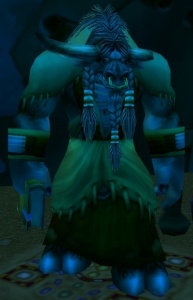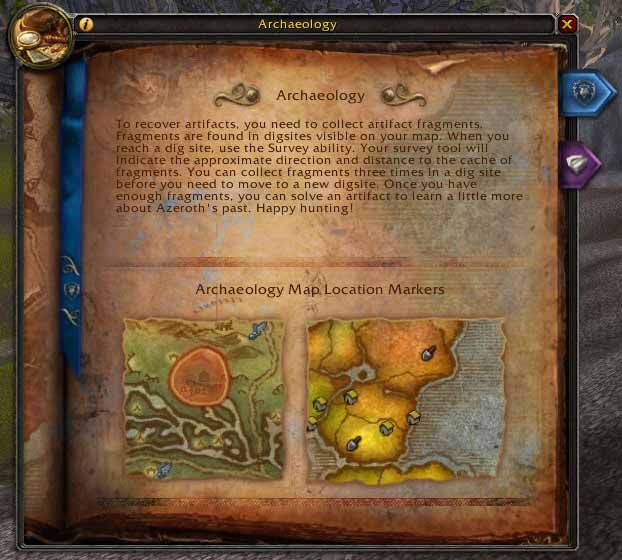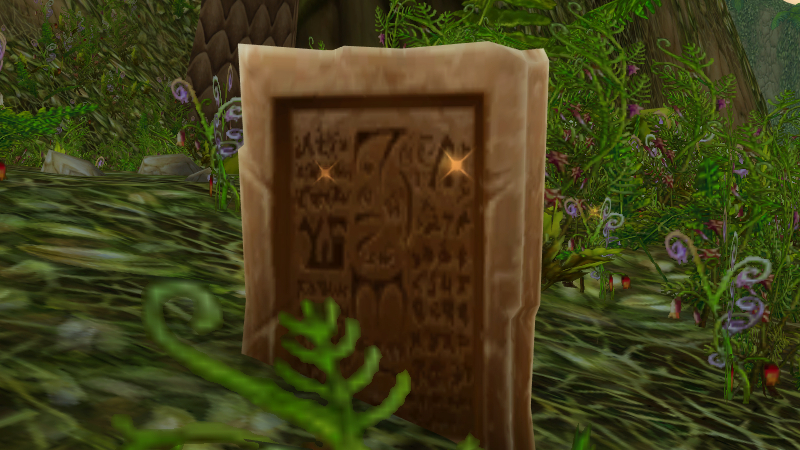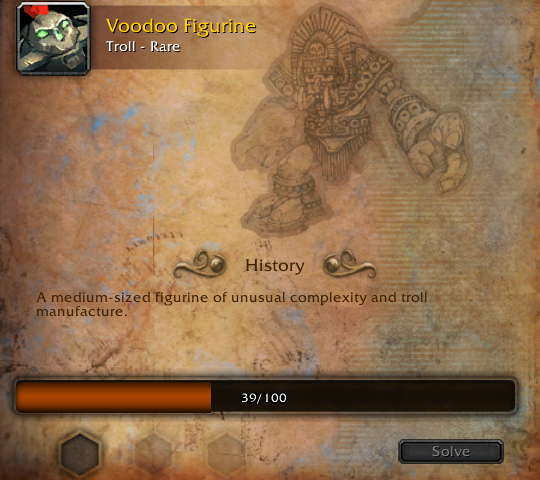WoW Cataclysm - "Archaeology" All you need to know

Archaeology is a fascinating secondary profession that made its debut in the Cataclysm expansion of World of Warcraft. Much like Cooking, First Aid, and Fishing, Archaeology adds depth to the gameplay experience. Players can start training in Archaeology at level 20, irrespective of their proficiency in other secondary professions.
As the name implies, Archaeology plunges players into a world of exploration, excavation, and discovery. With Deathwing's cataclysmic upheaval reshaping Azeroth's landscapes, ancient artifacts have been unearthed, waiting to be found and pieced together. This profession requires adventurers to traverse the length and breadth of the world, delving into forgotten ruins, deciphering ancient lore, and unearthing relics of bygone eras.
Trainers Location
Alliance
1. Diya:

Location: The Exodar, The Vault of Lights.

2. Doktor Professor Ironpants:

Location: Ironforge, Hall of Explorers.

3. Hammon the Jaded:

Location: Darnassus, The Temple of the Moon.

4. Harrison Jones:

Location: Stormwind, Stormwind Keep.

Horde
1. Adam Hossack:

Location: Undercity, Magic Quarter.

2. Belloc Brightblade:

Location: Orgrimmar, Grommash Hold

3. Elynara:

Location: Silvermoon City, The Royal Exchange

4. Otoh Greyhide:

Location: Thunder Bluff, Elder Rise

Dig sites
In Archaeology, dig sites serve as the cornerstone of the profession, offering adventurers the chance to unearth ancient relics and uncover forgotten mysteries. These dig sites are conveniently marked on the map by a distinctive shovel icon, making them easy to locate. Across each continent, players will find four of these sites, each brimming with potential treasures waiting to be discovered.

The primary objective at each dig site is to search for two main types of items: keystones and artifact fragments. Keystones play a vital role in enhancing the efficiency of excavation, while artifact fragments are the essential building blocks used to reconstruct ancient relics.
One crucial aspect to note is that the artifact fragments you uncover are exclusively yours. While other players may be exploring the same area, they cannot lay claim to the artifacts you discover. However, competition may arise from fellow archaeologists vying for the same treasures.
When viewing the continent map, the boundaries of each dig site are clearly demarcated by a red border line, providing orientation and guidance to players. As adventurers progress in Archaeology skill, their accessibility to dig sites expands:
- Level 1-299: Eastern Kingdoms and Kalimdor
- Level 300: Outland
- Level 375: Northrend
- Level 450: Cataclysm Endgame Zones
It's essential to remember that dig sites are fixed locations, allowing players to revisit the same excavation site multiple times. Moreover, these sites are strategically positioned to bypass starting zones, ensuring that low-level players have ample opportunities to level up before embarking on their archaeological endeavors.

Artifact Fragments
Artifact fragments are the cornerstone of Archaeology, serving as the fundamental components that ultimately culminate in the creation of valuable artifacts. These fragments are dispersed across various excavation sites, each intricately linked to specific races or civilizations of Azeroth's rich history.

The distribution of artifact fragments is carefully curated, with each excavation site offering fragments pertinent to the lore and culture associated with the region. Whether it's the relics of ancient trolls in Stranglethorn Vale or the remnants of the titan-forged in Uldum, each dig site holds clues to unraveling the mysteries of Azeroth's past.
Acquiring these fragments is a multifaceted endeavor, requiring keen observation, strategic excavation, and sometimes a dash of luck. As players delve into dig sites and uncover artifacts, they'll gradually amass a collection of fragments, each contributing to their progress in Archaeology.
| Type | Skill Lvl | Location |
|---|---|---|
| Dwarf | 1 | Eastern Kingdoms, Kalimdor |
| Fossil | 1 | Eastern Kingdoms, Kalimdor |
| Night Elf | 1 | Kalimdor, Northrend, Eastern Kingdoms |
| Troll | 1 | Eastern Kingdoms, Northrend, Kalimdor |
| Draenei | 300 | Outland |
| Orc | 300 | Outland |
| Nerubian | 375 | Northrend, Eastern Kingdoms |
| Vrykul | 375 | Northrend |
| Tol’vir | 450 | Uldum |
Surveying
Surveying is a crucial skill for any aspiring archaeologist, allowing them to pinpoint the locations of buried artifact fragments within a dig site. This ability, found in the professions tab, acts as a compass, guiding players toward their next discovery.
Survey can only be utilized while within an active dig site, denoted by the distinctive red line on the map. Upon activation, a specialized tool emerges, emitting a colored light that indicates the proximity of the nearest fragment.
Understanding the colors of the light is essential for gauging the distance to the fragments:
- Red Light: Indicates that the fragment is located at a considerable distance, roughly 80 yards or more away. Prepare for an extensive search.
- Yellow Light: Signals that the fragment is within a medium range, typically between 40 and 80 yards from the player's current position.
- Green Light: Brings good news, as it indicates that the fragment is nearby, typically within 40 yards or less.
However, it's important to note that the tool's guidance isn't precise. Its visual field resembles a wide cone, providing a general direction rather than an exact location. As a result, players may need to conduct several surveys, making necessary adjustments along the way to hone in on the accurate location of the fragment.
As you meticulously survey the area using the colored light, you’ll reach a point where the fragment itself appears on the ground, distinguished by a golden gleam. Additionally, your minimap will show the fragment as a yellow dot for improved visibility.
Don’t delay! Items can disappear if not picked up within a certain period. Quickly interact with the artifact by tapping on it to add it to your collection. This may yield several fragments, even a keystone, crucial for Archaeology.
Keystones
Keystones are invaluable tools for archaeologists, offering a significant time-saving advantage in the artifact collection process within dig sites. Each keystone holds the equivalent value of 12 fragments of the same type, streamlining the acquisition of artifact progress.
While fragments can be utilized at any time during the artifact reconstruction process, keystones have a more restricted field of application. Each artifact can only accommodate a limited number of keystones, typically ranging from 1 to 3, depending on the artifact's complexity and design.
Given the finite capacity of keystones within artifacts, players must adopt a strategic approach when deciding which keystones to utilize. This decision may involve assessing the rarity of the artifact, the availability of fragments, and the potential benefits of accelerating the artifact collection process.
Despite the undeniable power of keystones, collecting fragments remains a critical component of completing an artifact. Fragments not only contribute to the overall progress of artifact reconstruction but also offer insights into the lore and history associated with each artifact.
Artifact Crafting
Crafting artifacts is the culmination of an archaeologist's efforts, transforming gathered fragments into valuable treasures. The process involves collecting a specific number of fragments, typically ranging from 25 to 150, to complete an artifact. While keystones are not mandatory for crafting artifacts, they can expedite the process and any leftover keystones are automatically carried over to the next research project.

Once enough fragments have been gathered for a particular artifact, players can simply press the "Solve" button to initiate the research project. This converts the fragments into a tangible treasure, whether it's a common artifact or a rare one. Excess fragments are automatically utilized for subsequent research projects, ensuring continual progress in archaeological pursuits.
It's important to note that players have no control over which research projects they receive initially. This means that they may need to repeat the same research for a particular race multiple times before obtaining the desired artifact. This element of chance adds an element of unpredictability to the Archaeology profession, requiring perseverance and patience from adventurers.
Artifacts are divided into two primary categories:
1. Common Artifacts: These artifacts may be considered of inferior quality and may not hold much practical value. They serve as stepping stones in the archaeological journey, providing incremental progress towards more valuable discoveries.
2. Rare Artifacts: Rare artifacts are the true treasures sought by archaeologists. These items can range in quality from Rare to Epic, offering a variety of exciting rewards. Cataclysm Archaeology rare items include companion pets, unique mounts, entertaining toys, powerful armor sets, and formidable weapons. Obtaining rare artifacts is often the ultimate goal of archaeologists, driving them to explore every corner of Azeroth in search of hidden treasures.
Best Races to Learn Archaeology
Dwarves gained a significant advantage in the field of Archaeology with the introduction of the Explorer racial ability. This racial trait replaced the Find Treasure ability and provided Dwarves with unique benefits tailored to the profession.
With the Explorer racial ability, Dwarves excel in Archaeology in several ways:
1. Additional Fragments: Dwarves have the ability to find additional fragments when looting archaeological finds. This means that with each dig site excavation, Dwarves have the potential to collect more artifact fragments compared to other races, accelerating their progress in artifact reconstruction.
2. Faster Surveying: Dwarves can survey faster than normal archaeologists. Surveying is a crucial aspect of Archaeology, allowing players to pinpoint the locations of buried artifact fragments within dig sites. With the ability to survey more rapidly, Dwarves can expedite the excavation process and uncover treasures more efficiently.
Given these advantages, Dwarves are undoubtedly one of the best races for players looking to excel in Archaeology. Their innate abilities complement the intricacies of the profession, providing a significant edge in artifact collection and exploration.
Archaeology Addons
These Cataclysm Classic Archaeology addons are indeed invaluable tools for adventurers seeking to streamline their artifact collection process and maximize their efficiency in excavation activities:
1. Minimal Archaeology: This addon simplifies Archaeology activities by providing a compact window that displays your artifact progress and solutions. With its user-friendly interface, you can easily monitor your artifact history by race, manage dig sites, and attach keystones with just a few clicks. This addon is perfect for players who prefer a minimalist approach to tracking their Archaeology progress while keeping their focus on the excavation sites.
2. Archy: Archy offers a comprehensive suite of features tailored to Archaeology, including personalized and movable lists of dig sites and artifacts sorted by continent. It provides valuable information on the racial factions of each dig site and offers the option to solve artifacts with or without keystones. With TomTom assistance, players can efficiently navigate between dig sites, minimizing travel time. Additional features such as the ability to ban dig sites and races, sound triggers, and a dig recorder enhance the overall Archaeology experience. The LDB Tooltip feature provides useful insights into missing rare artifacts and overall progress, making Archy a must-have addon for serious archaeologists.
3. Archaeology Helper: This addon enhances the surveying process with the addition of triangulation to the Heads-Up Display (HUD). After using the survey skill, color-coded buttons on the HUD point out the locations of fragments, streamlining the excavation process. Additionally, the integration with GatherMate2 allows players to pin nodes displayed on the HUD, further speeding up the process. With features like a dig site indicator on the Battlefield Minimap, customizable keybindings, and various settings, Archaeology Helper offers a customizable and efficient solution for archaeologists seeking to optimize their excavation activities.



